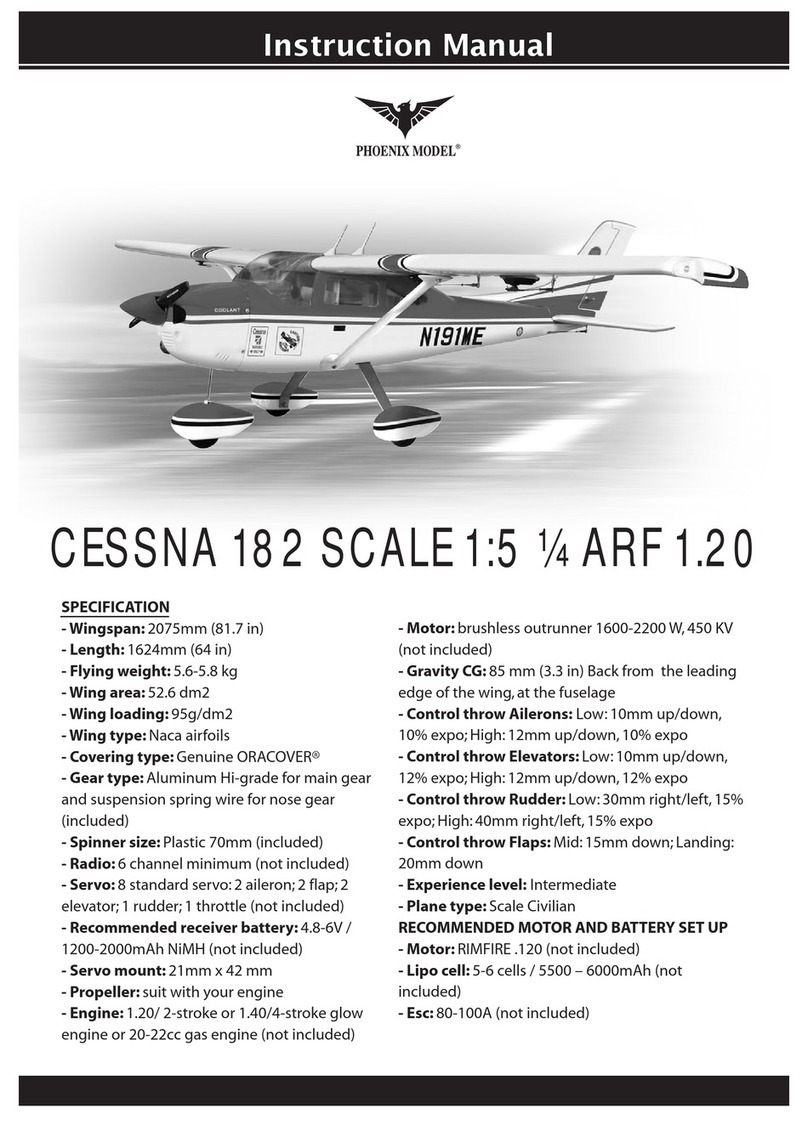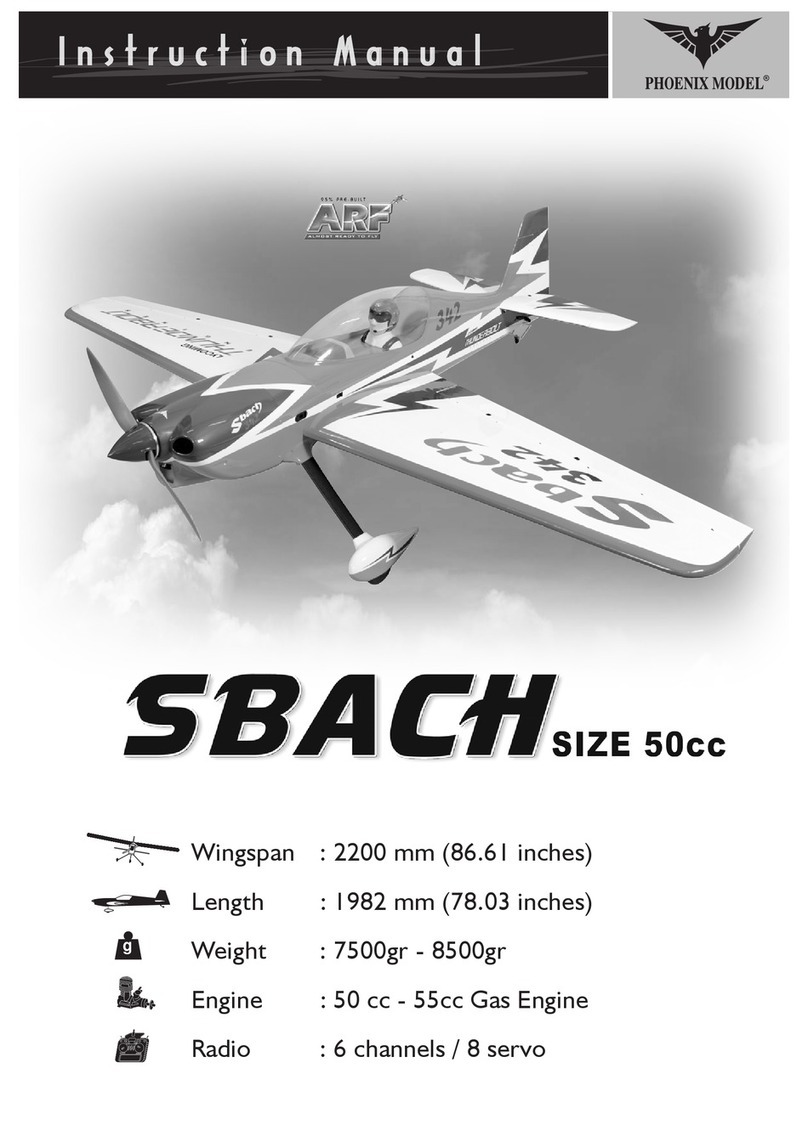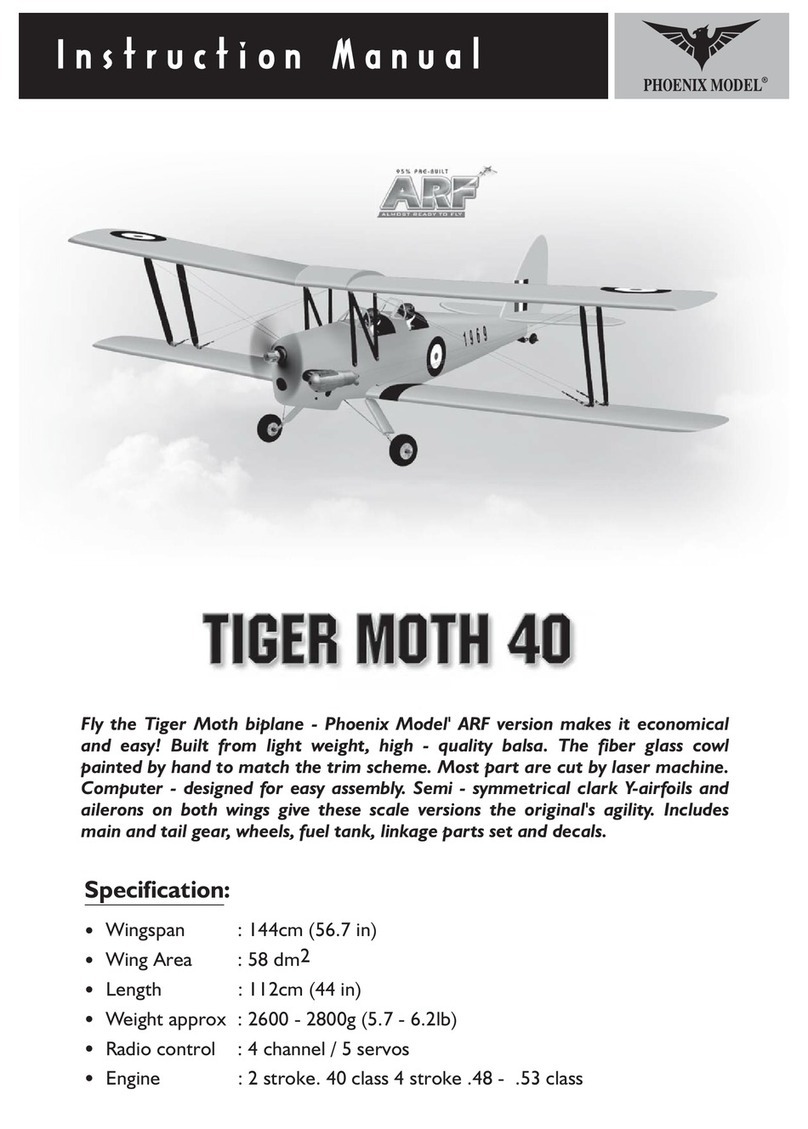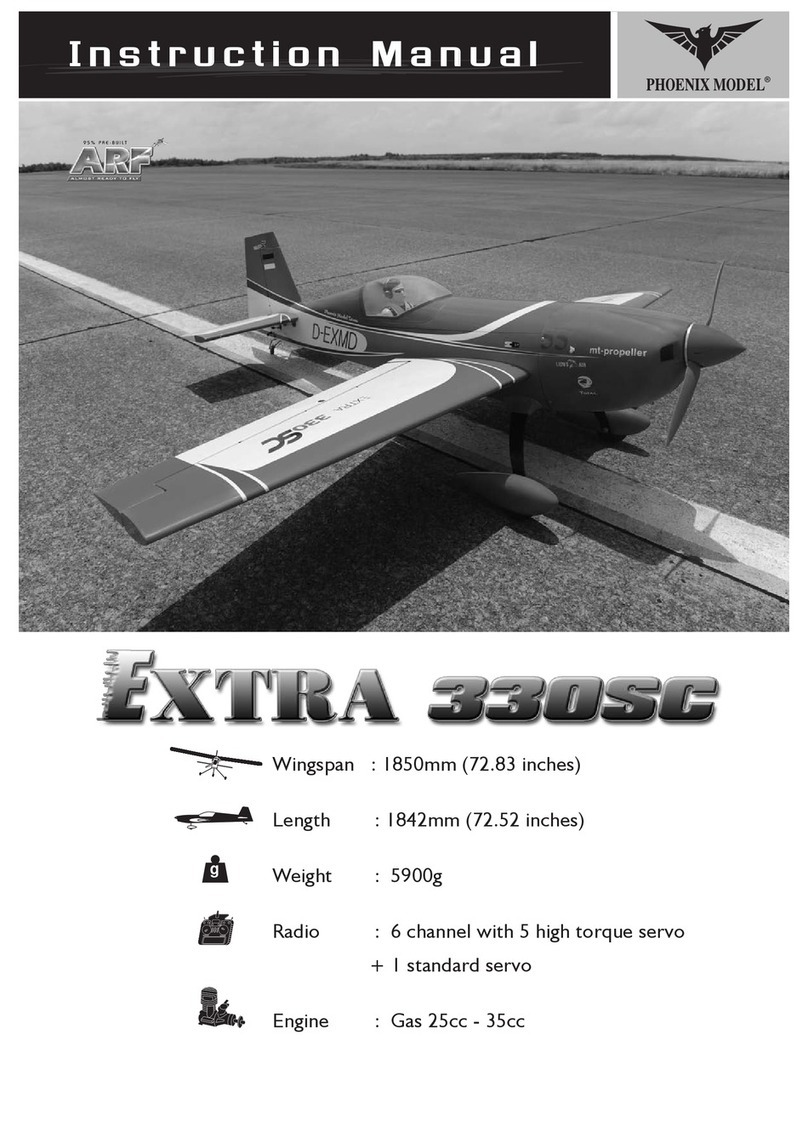3. Carefully bend the second nylon tube up at a 45
degree angle (using a cigarette lighter). This
tube will be the vent tube to the muffler.
4. Carefully bend the third nylon tube down at a 45
degree angle (using a cigarette lighter). This
tube will be vent tube to the fueling valve
When the stopper assembly is installed in the
tank, the top of the vent tube should rest just
below the top surface of the tank. It should not
touch the top of the tank.
5. Test fit the stopper assembly into the tank. It
may be necessary to remove some of the
flashing around the tank opening using a
modeling knife. If flashing is present, make sure
none of it falls into the tank.
6. When satisfied with the alignment of the stopper
assembly tighten the 3mm x 20mm machine
screw until the rubber stopper expands and
seals the tank opening. Do not over tighten the
assembly as this could cause the tank to split.
7. Using a modeling knife, cut 3 lengths of fuel line
150mm long. Connect 2 lines to the 2 vent tubes
and 1 line to the fuel pickup tube in the stopper.
8. Feed three lines through the fuel tank
compartment and through the pre-drilled hole in
the firewall. Pull the lines out from behind the
engine, while guiding the fuel tank into place.
Push the fuel tank as far forward as possible,
the front of the tank should just about touch the
back of the firewall. Blow through one of the
lines to ensure the fuel lines have not become
kinked inside the fuel tank compartment. Air
should flow through easily.
Do not secure the tank into place permanently
until after balancing the airplane. You may need
to remove the tank to mount the battery in the
fuel tank compartment.
9. To secure the fuel tank in place, apply a bead of
silicon sealer to the forward area of the tank,
where it exits the fuselage behind the engine
mounting box and to the rear of the tank at the
forward bulkhead.
10. Use 6mm x 8mm hardwood to secure the fuel
tank in place by CA glue.
9
Katana 120
Instruction Manual
INSTALLING THE ENGINE
This manual, we used the OS 120 - two stroke
1. Install the engine mount.
2. Locate the long piece of wire used for the
throttle pushrod. One end of the wire has been
pre-bend in to a "Z" bend at the factory. This
"Z" bend should be inserted into the throttle
arm of the engine when the engine is fitted
onto the engine mount. Fit the engine to the
engine mount using the screws provided.
10down thrust
30right thrust
33
32
INSTALLING THE STOPPER ASSEMBLY
1. The stopper has been pre-assembled at the factory.
2. Using a modeling knife, cut one length of silicon
fuel line (the length of silicon fuel line is
calculated by how the weighted clunk should
rest about 8mm away from the rear of the tank
and move freely inside the tank). Connect one
end of the line to the weighted clunk and the
other end to the nylon pick up tube in the
stopper.
!
!!































